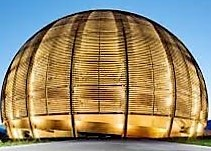Speaker
Description
Binding energies, proton-neutron paring and α-like quartetting in proton-rich nuclei
close to N=Z line
N. Sandulescu
National Institute of Physics annd Nuclear Engineering, 76900 Magurele-Bucharest, Romania
The modelling of nucleosynthesis processes triggered by rapid proton capture requires accurate predictions for the binding energies of proton-rich nuclei far from stability. Such predictions are particularly difficult for nuclei close to the N = Z line, which are more bound than the neighboring nuclei. This extra binding, called Wigner energy, is not accounted for by the microscopic mass models [1]. Consequently, in these mass models the contribution of Wigner energy to the binding energy is added through a phenomenological term. For many years it was speculated that Wigner energy might be related to the proton-neutron (pn) pairing, but this fact was not proved by realistic mean-field calculations. Recent studies have shown that the pn pairing correlations can be accurately described not by Cooper pairs, as considered in the majority of mean-field calculations [2, 3], but by α-like quartets [4–12]. By employing a quartet formalism it was then demonstrated that the pn pairing can account for a large fraction of the Wigner energy [6, 10]. Very recently it was also shown [13] that self-consistent mean field calculations, with the pn pairing treated in terms of α-like quartets, provide reliable binding energies for nuclei with |N −Z|=0,2,4 and with the atomic masses up to A=100, where the rp-process starts to be inhibited by the α decay.
[1] S. Goriely, N. Chamel, and J. M. Pearson, Phys. Rev. C 88, 061302(R), (2013).
[2] A. L. Goodman, Phys. Rev. C 63, 044325 (2001).
[3] A. Gezerlis, G. F. Bertsch, and Y. L. Luo, Phys. Rev. Lett. 106, 252502 (2011).
[4] N. Sandulescu, D. Negrea, J. Dukelsky, C. W. Johnson, Phys. Rev. C 85, 061303(R), (2012).
[5] N. Sandulescu, D. Negrea, and C. W. Johnson, Phys. Rev. C 86, 041302(R) (2012).
[6] D. Negrea and N. Sandulescu, Phys. Rev. C 90, 024322 (2014).
[7] N. Sandulescu, D. Negrea, and D. Gambacurta, Phys. Lett. B 751, 348 (2015).
[8] M. Sambataro and N. Sandulescu, Phys. Rev. Lett. 115, 11 (2015).
[9] M. Sambataro and N. Sandulescu, Phys. Rev. C 93, 054320 (2016).
[10]. D. Negrea, P. Buganu, D. Gambacurta, N. Sandulescu, Phys. Rev. C 98, 064319 (2018).
[11] M. Sambataro and N. Sandulescu, J. Phys. G: Nucl. Part. Phys. 47, 11, (2020).
[12] M. Sambataro and N. Sandulescu, Phys. Lett. B 820, 136476 (2021).
[13] D. Negrea, N. Sandulescu and D. Gambacurta, Phys. Rev. C 105, 034325 (2022).




